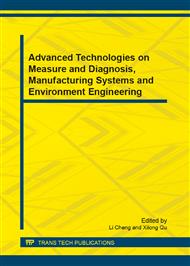p.378
p.382
p.387
p.392
p.397
p.401
p.406
p.411
p.416
The Hardware System of Rotational Electrical Impedance Tomography
Abstract:
Electrical impedance tomography (EIT) is an imaging method of the resistivity distribution within a domain. The images are estimated from a set of electrical potential measurements at the boundary of a domain, which are caused by applying current through electrodes fixed at its boundary. In order to improve the image quality, a rotational electrical impedance tomography (REIT) system is proposed to expand the measurement sites by shifting the electrodes. The hard system of REIT is established in the paper, which is composed of three subsystems, rotary scheme, and switches network and measurement system. By injecting the alternating current into the object, a potential will be established on the boundary electrodes of object. The reconstruct results based on REIT system are improved obviously.
Info:
Periodical:
Pages:
397-400
Citation:
Online since:
June 2013
Price:
Сopyright:
© 2013 Trans Tech Publications Ltd. All Rights Reserved
Share:
Citation:


